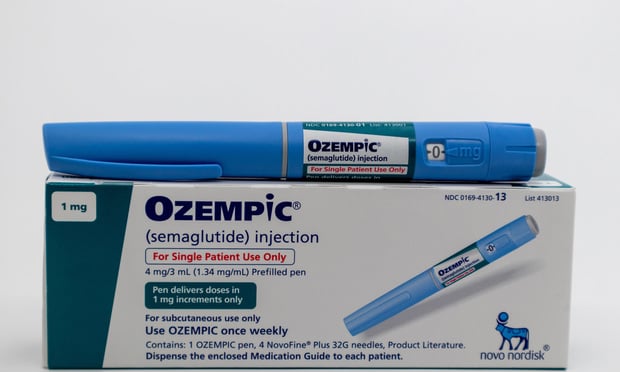More than half of employees default to their current benefit coverage for the coming year instead of actively reassessing plan options, according to data from Aon Hewitt.
"It's easy to fall back on the status quo and assume that your 2012 benefits choices will continue to meet your needs in 2013," says Craig Rosenberg, Aon Hewitt's national leader for health and welfare benefits administration. "But changes to family health care needs, employer plan offerings and costs make it important for workers to reevaluate their selections every year."
But a number of factors—including rising costs, the declining health of the population and new provisions under health reform—make changes even more important this year.
Recommended For You
Data from Aon Hewitt shows health care costs are expected to rise 6.3 percent in 2013 to $11,188 per employee, compared to $10,522 in 2012. In most cases, employers still shoulder much of the cost, but workers should expect to see their portion of the total cost rise in the form of increased premiums and out-of-pocket costs. The amount employees will pay for their health care benefits in 2013 is expected to be close to $5,000—$2,385 in premiums and another $2,449 in out-of-pocket costs.
Aon Hewitt offers the following tips for employees this open enrollment season:
Understand what's changing for you and with your benefits. Start by evaluating how you and your family used health care in 2012. Consider how much was spent out-of-pocket on deductibles and coinsurance, the number of doctor visits and the cost of ongoing medications. If you are participating in a flexible spending account, evaluate if the contribution is too little or too much based on actual expenses. If you currently have a health reimbursement account or health savings account, determine what remaining balance you might have to apply to 2013 expenses. In the case of an HRA, check to confirm whether unused funds roll over to 2013.
Beginning in 2013 under the PPACA, employees' contributions to FSAs will be capped at $2,500 annually. Previously, there was no regulatory limit but many employers capped contributions at $5,000 or more. However, most workers do not contribute at that level. Among Aon Hewitt clients, employees contribute an average of $1,600 annually to their FSAs.
In addition, carefully review information from your employer about your 2013 benefit plan offerings. According to Aon Hewitt, more employers are offering consumer-driven health plans than health maintenance organization options. As a result, plan options offered in the past may no longer be available.
Also new this year under the PPACA, employees will have access to Summary of Benefits and Coverage statements that provide a standardized overview of health plan coverage features, such as coinsurance, deductibles, and examples of out-of-pocket costs related to having a child and managing Type 2 diabetes. For workers at most large employers that provide decision support tools, SBCs will serve primarily as a supplement. For those employees at smaller companies, SBCs may provide new information that will be helpful in selecting coverage for 2013.
Take advantage of incentives and opportunities to improve your health. Employers continue to offer tools to help employees, and increasingly, their spouses and partners, better understand their health risks. According to a recent Aon Hewitt survey, most companies (68 percent) offer Health Risk Questionnaires (HRQs) and 57 percent offer biometric screenings such as cholesterol, blood pressure and blood glucose.
Recognizing the importance of these programs, many companies offer incentives to participate. In fact, 84 percent of employers that offer HRQs provide incentives for completing them. Often, these incentives are monetary, like a reduction in medical premium cost, but they can also take the form of a reduction to your deductible so the plan starts paying benefits sooner.
"In order to manage rising health care costs, employers are increasingly turning toward strategies aimed at improving the overall health of their workers by encouraging behavior change and making them more accountable for the health decisions they make," says Jim Winkler, chief innovation officer for health & benefits at Aon Hewitt. "Employees should expect to see incentive programs like in past years, but now, companies are moving past simply asking workers to participate—they want to see improved health results too."
Aon Hewitt advises workers to take full advantage of all health and wellness programs available. In addition to receiving incentives from your employer, you can benefit from longer-term savings by getting a good picture of your health and identifying and addressing any health risks as soon as you can. Many employers make it convenient to complete these health improvement actions by offering worksite biometric testing and health evaluations, on-line HRQs, and follow-up so you can take steps to improve your health based on the information you learn.
Consider whether a CDHP meets your needs. Consumer-driven health plans continue to rise in popularity as another way to encourage you to take an active part in managing your health care. Employers typically pair CDHPs with either an HRA or an HSA. Employees can use one of these accounts to help pay for eligible out-of-pocket health care costs, controlling how and when they use these funds.
CDHPs may be available at a lower cost than other coverage. However, it is also important to consider how much you will spend out of pocket—for example, before you meet your deductible. In the case of CDHPs offered with an HSA, the deductible may be higher than you have experienced in the past. Employees should also ensure they understand how the accounts—either HRA or HSA—work.
© 2025 ALM Global, LLC, All Rights Reserved. Request academic re-use from www.copyright.com. All other uses, submit a request to [email protected]. For more information visit Asset & Logo Licensing.







